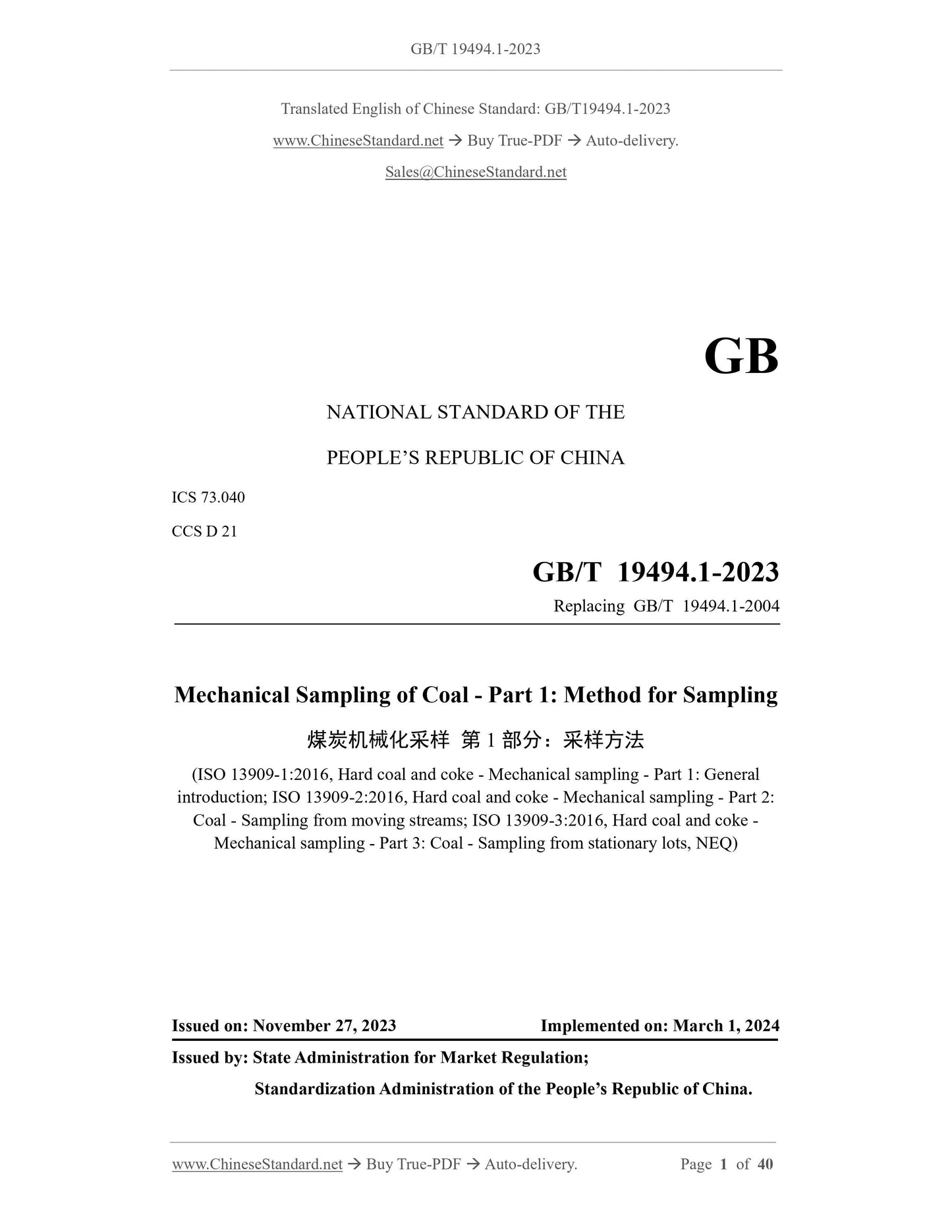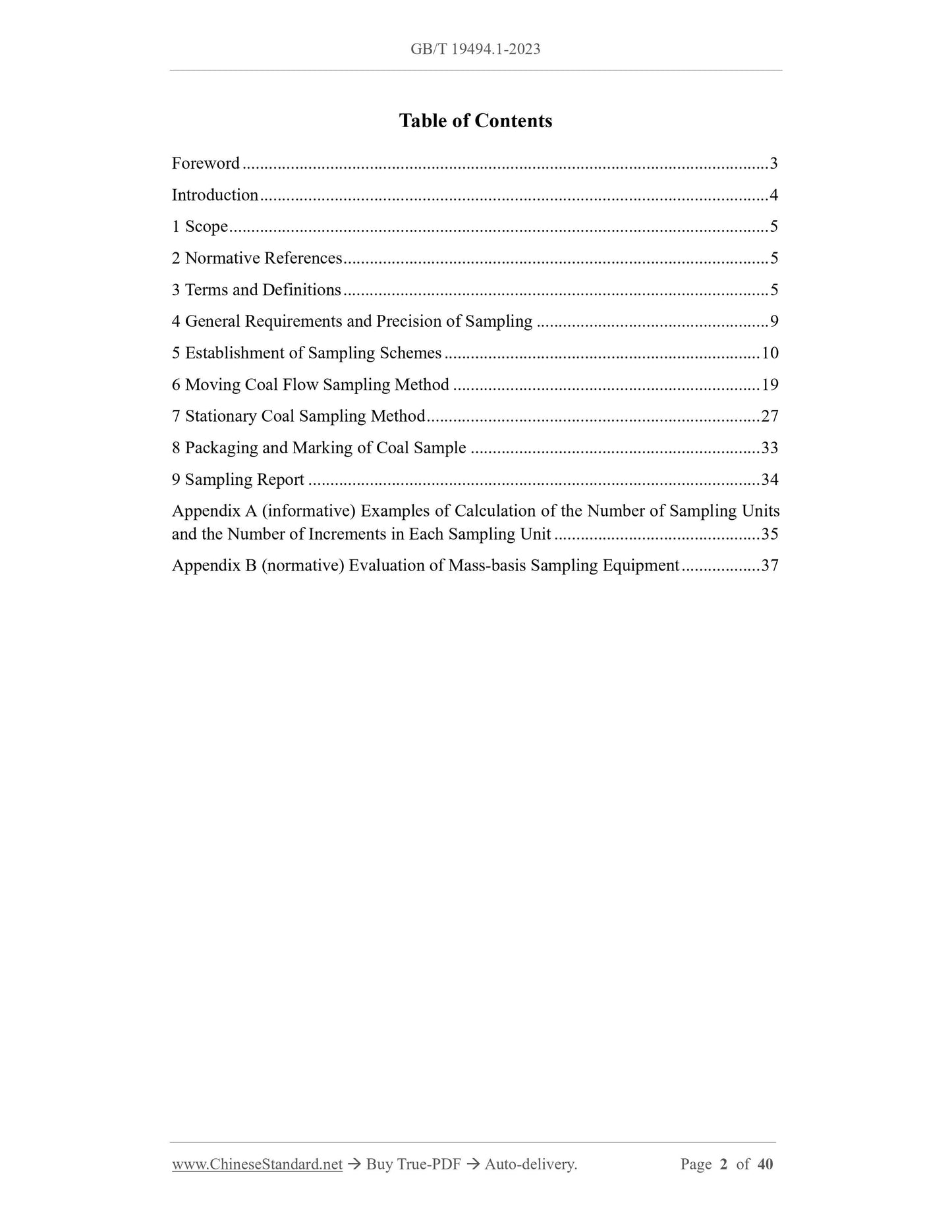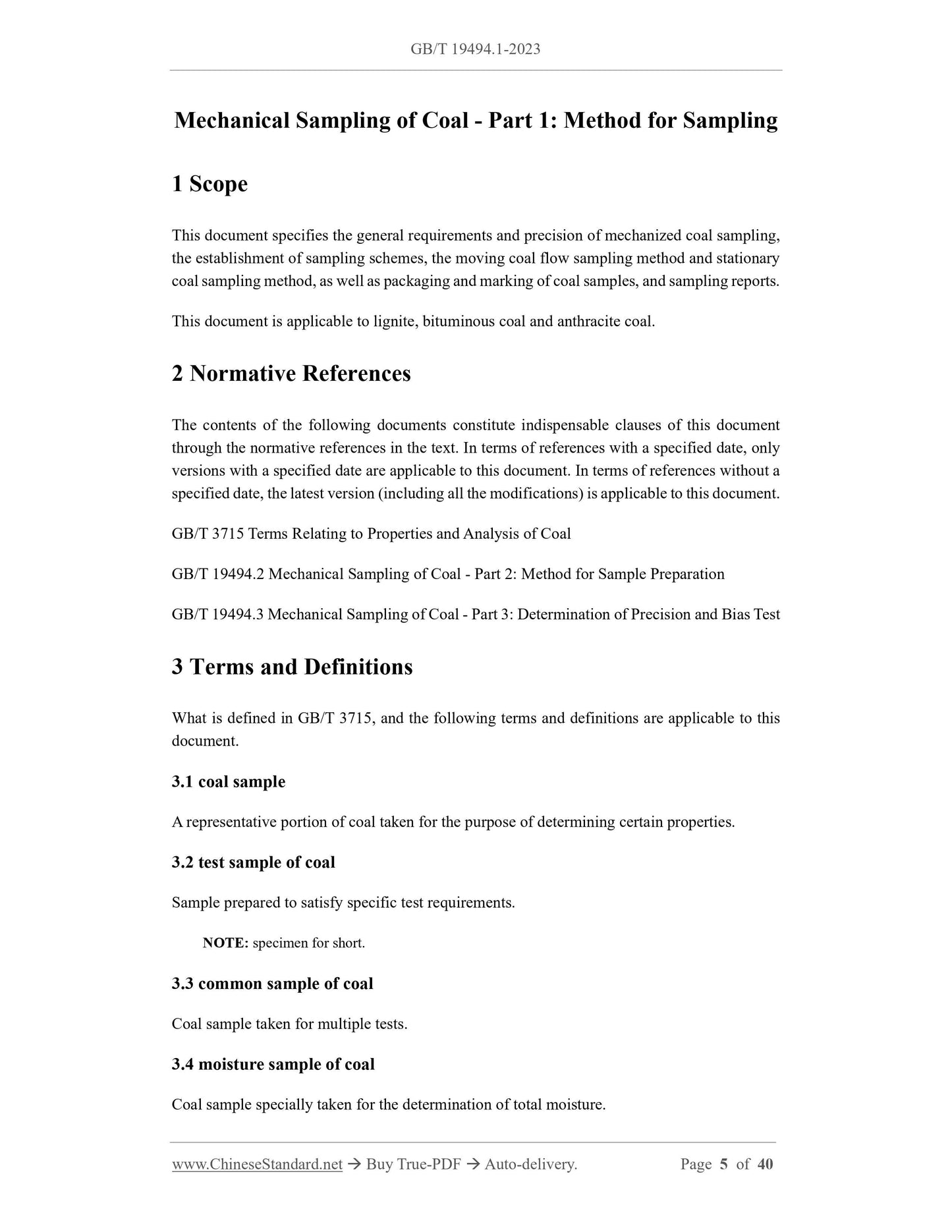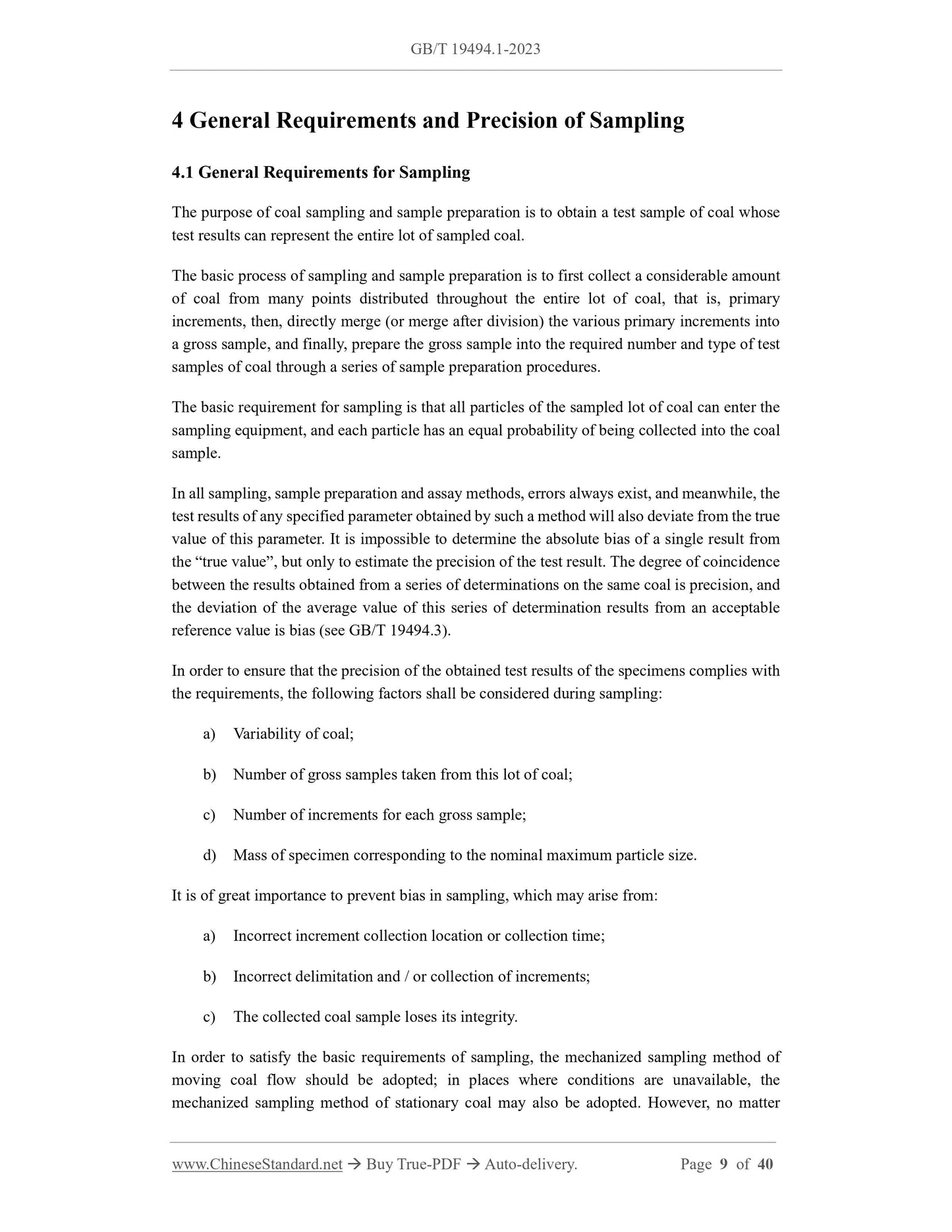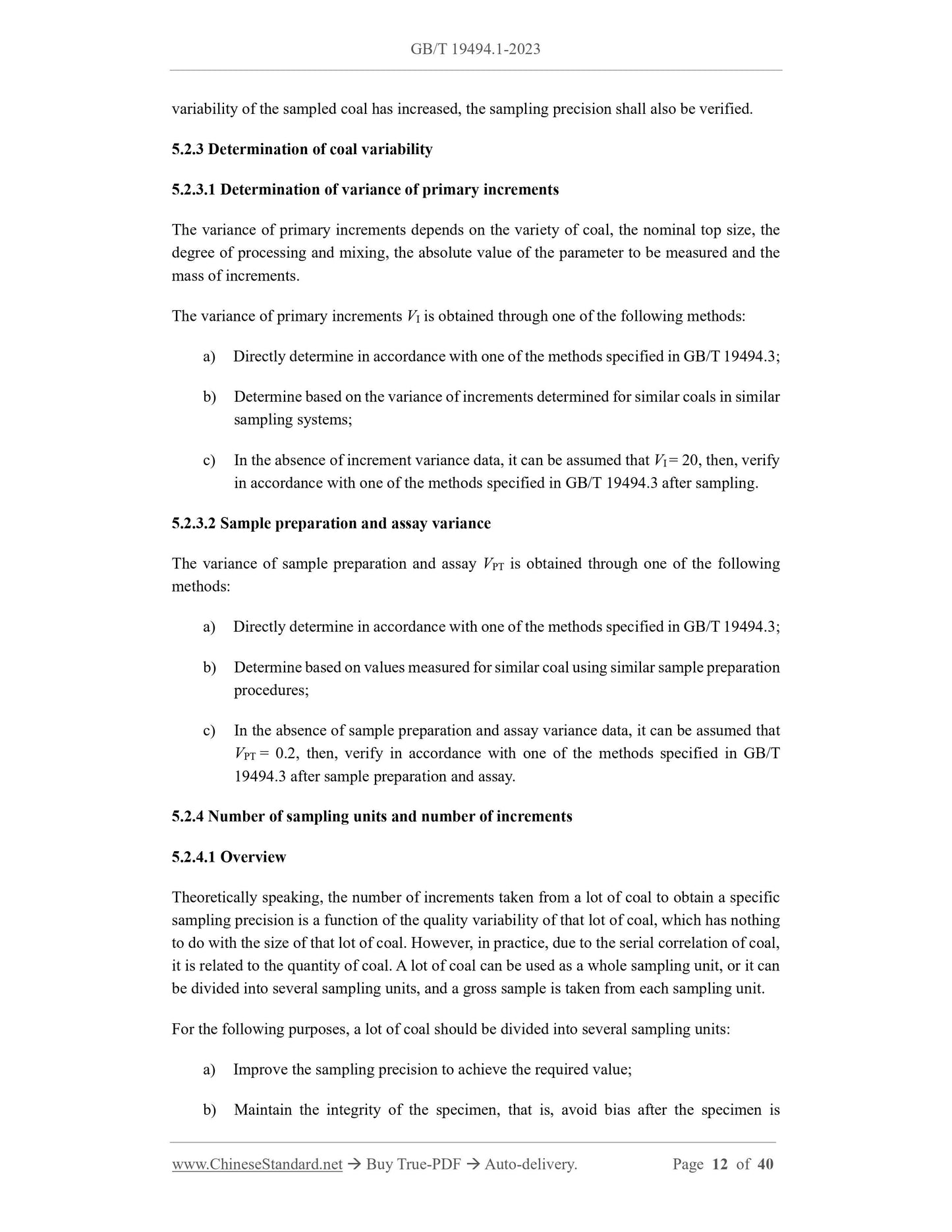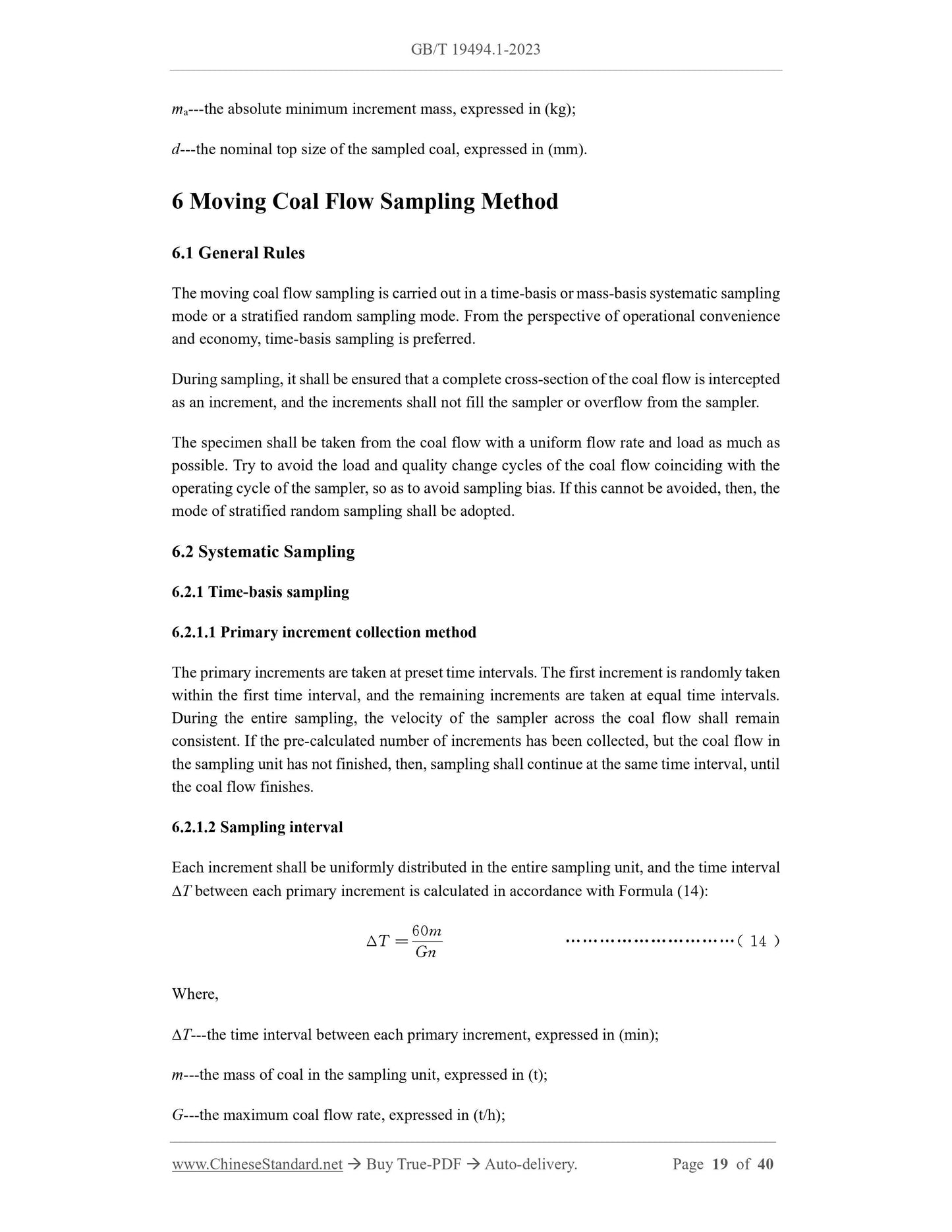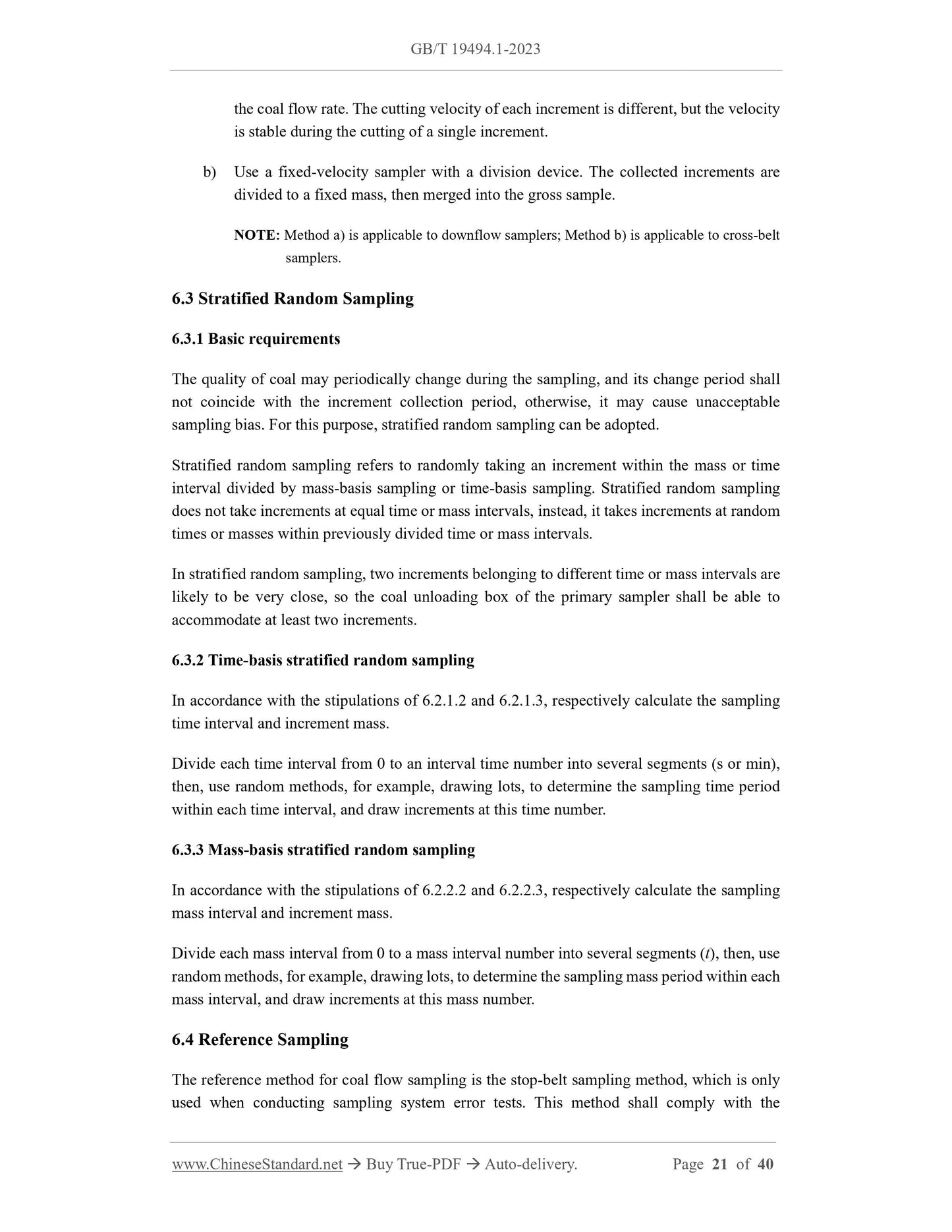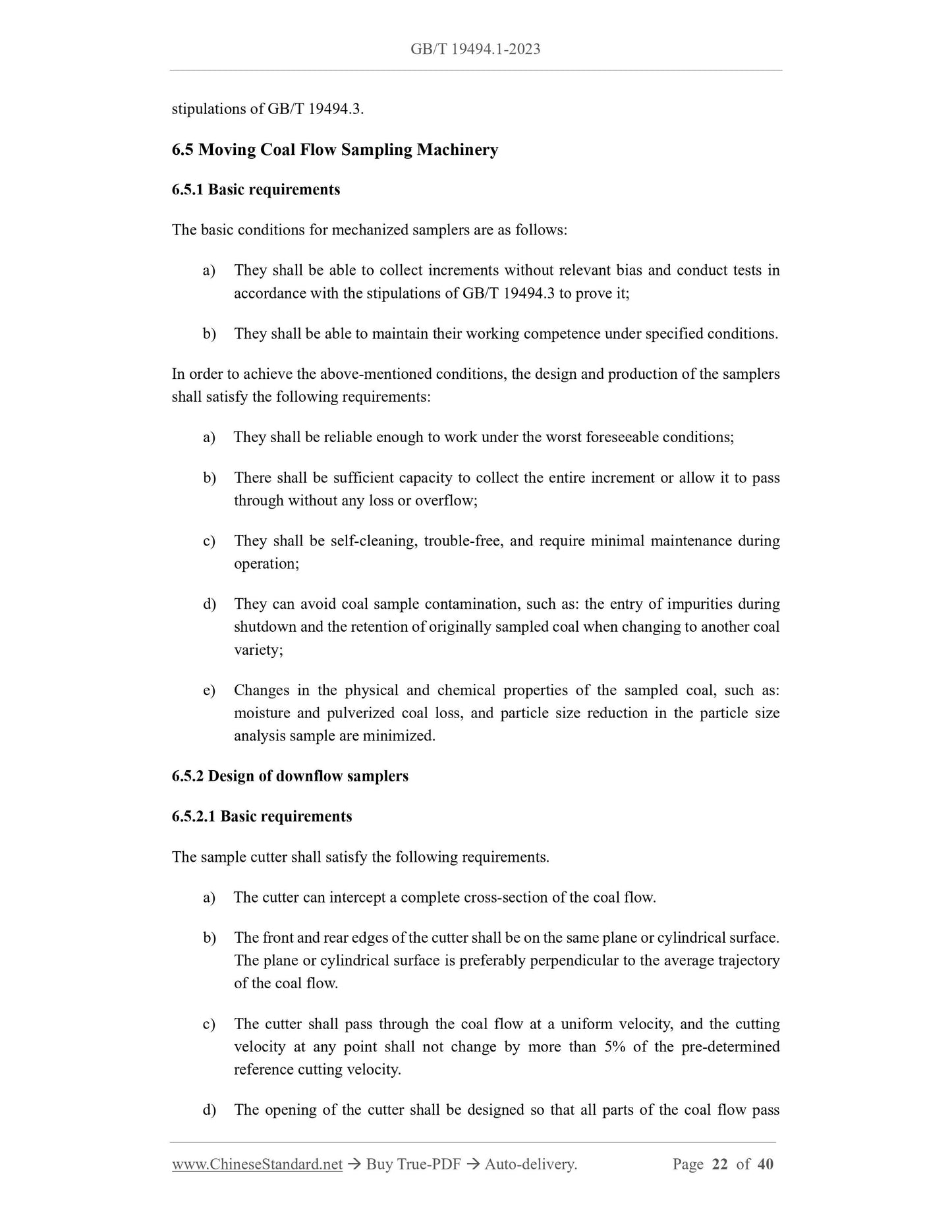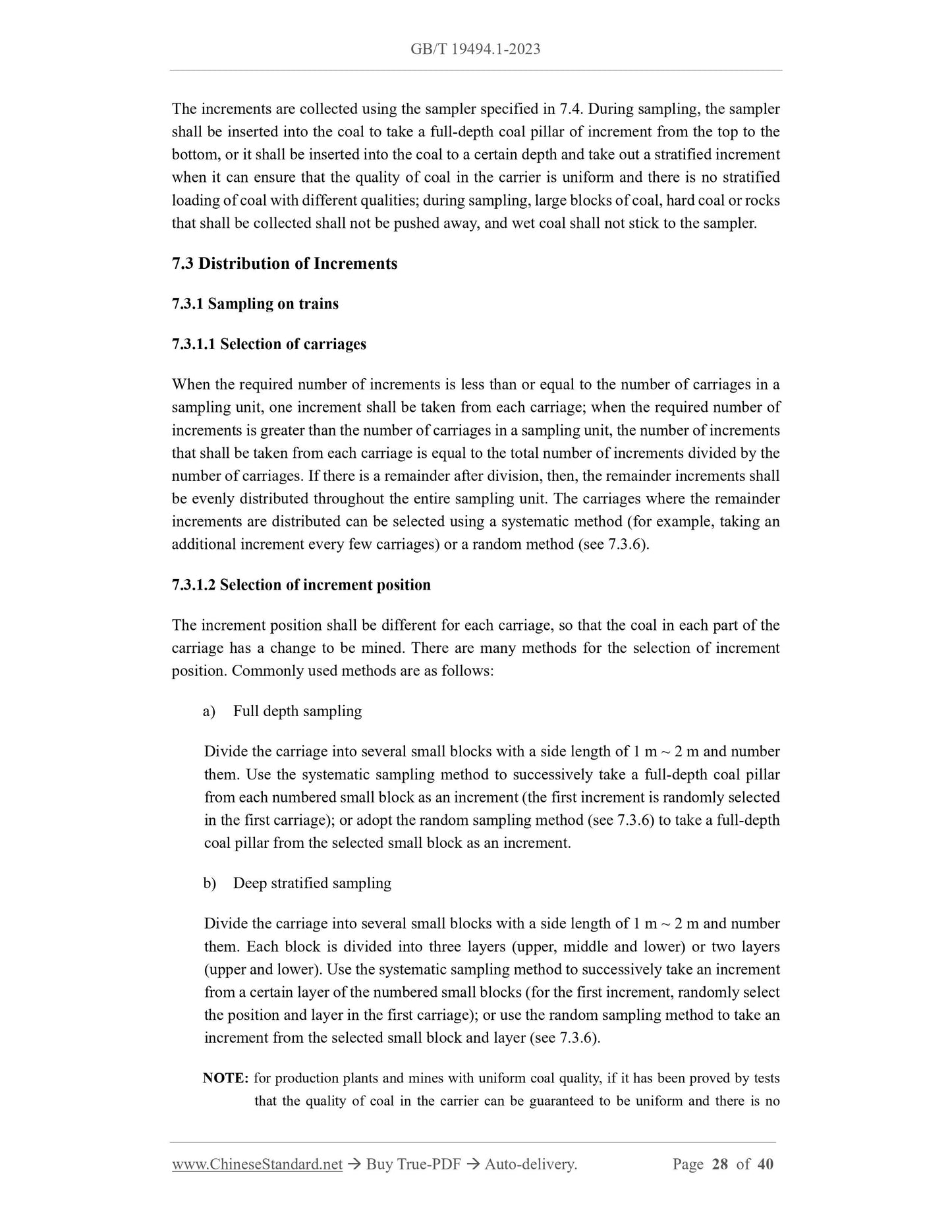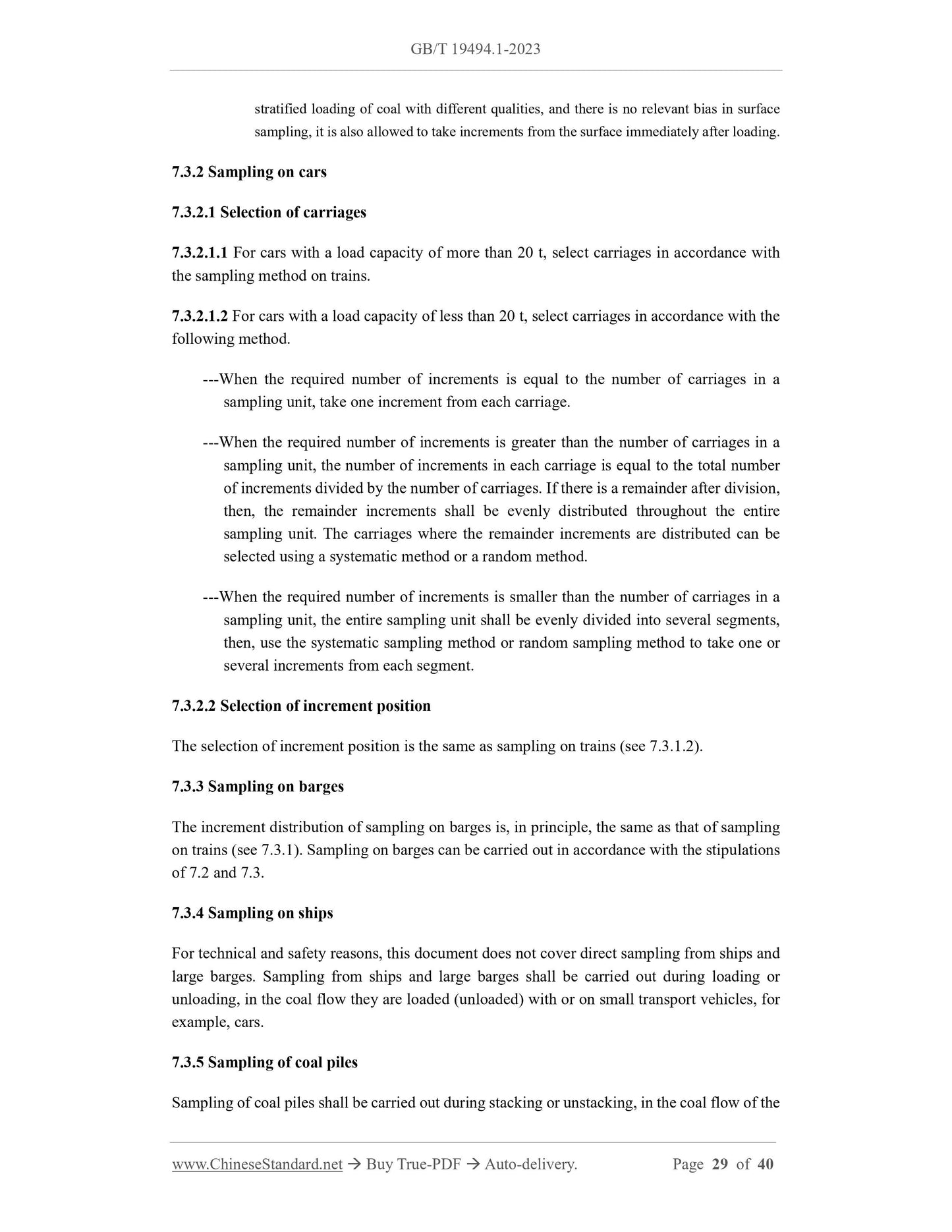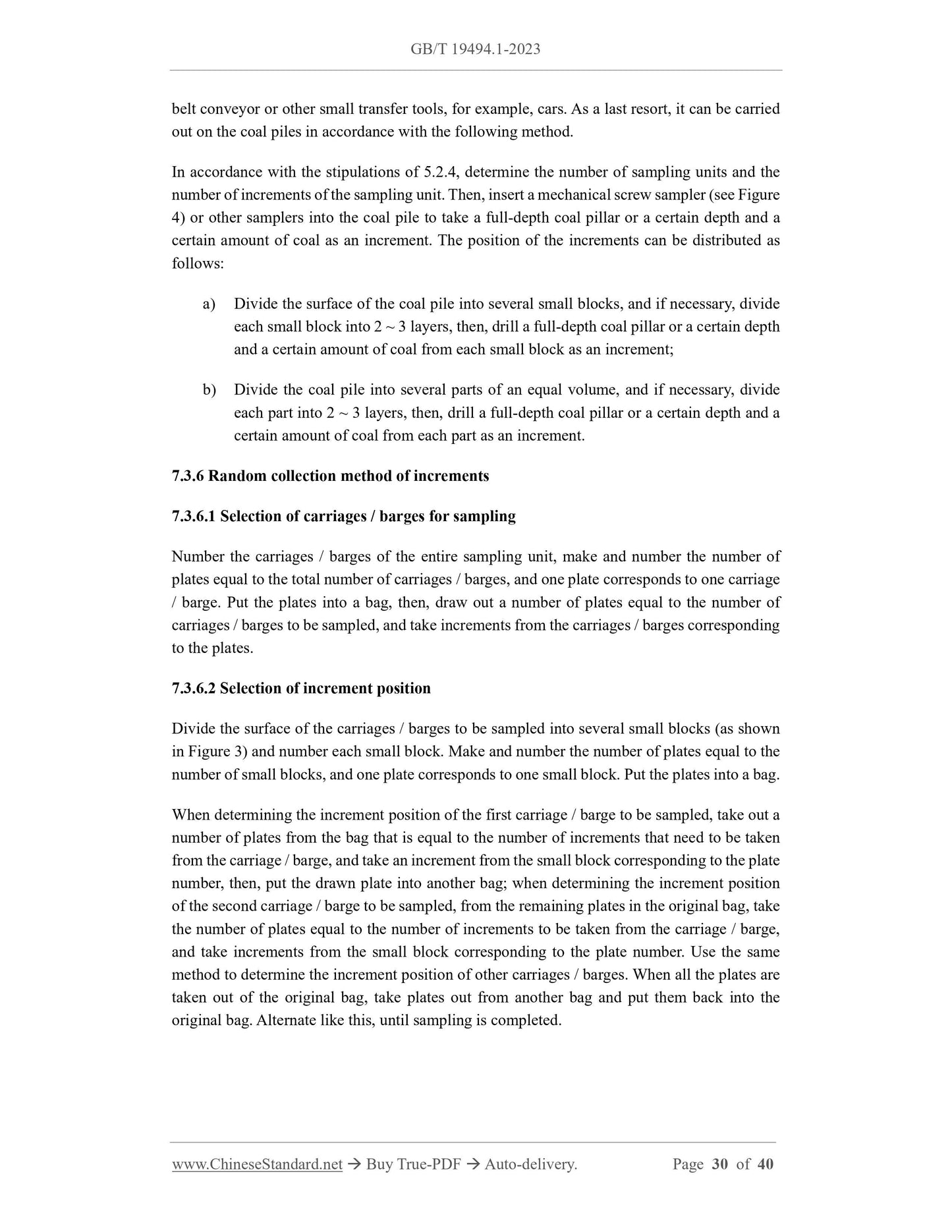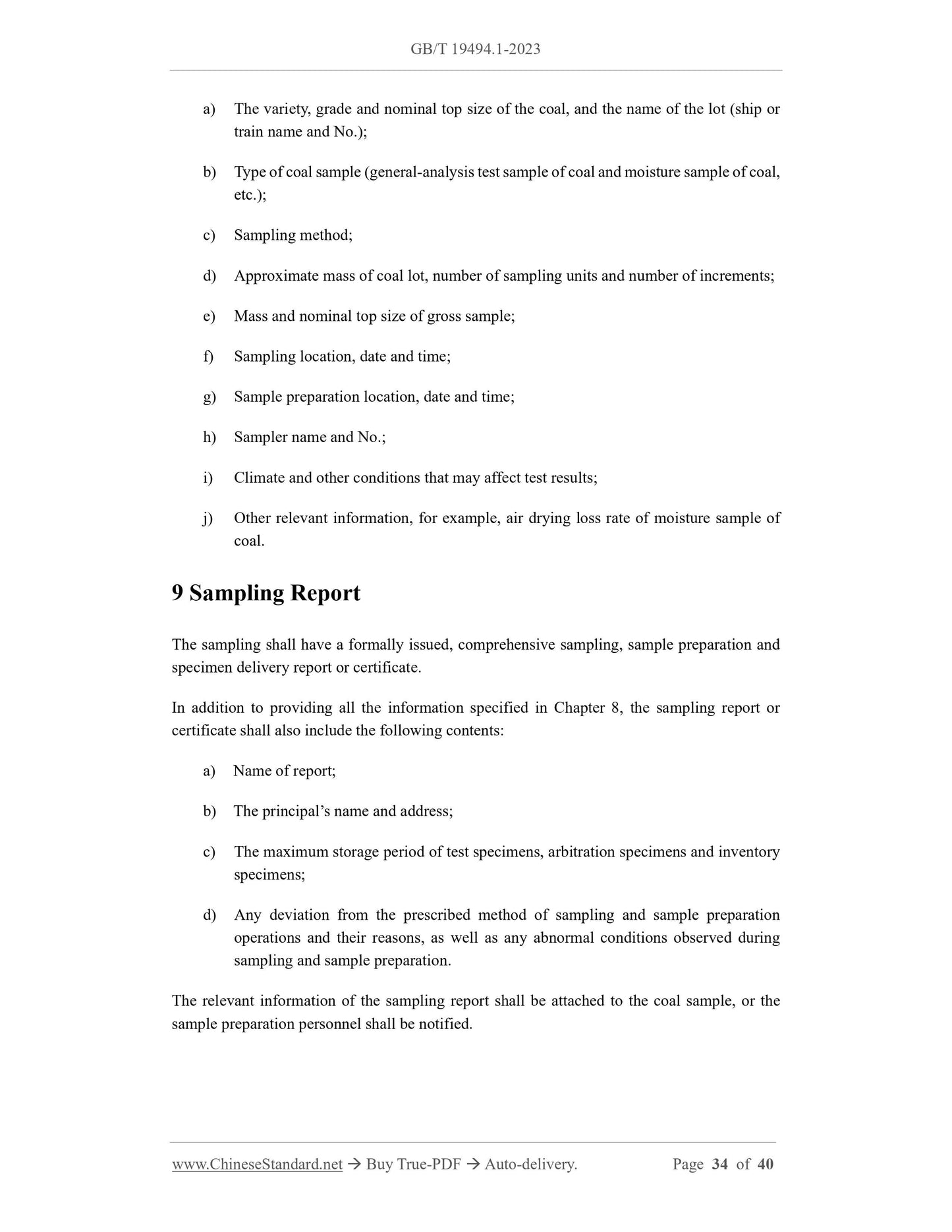1
/
of
12
www.ChineseStandard.us -- Field Test Asia Pte. Ltd.
GB/T 19494.1-2023 English PDF (GB/T19494.1-2023)
GB/T 19494.1-2023 English PDF (GB/T19494.1-2023)
Regular price
$440.00
Regular price
Sale price
$440.00
Unit price
/
per
Shipping calculated at checkout.
Couldn't load pickup availability
GB/T 19494.1-2023: Mechanical sampling of coal - Part 1: Method for sampling
Delivery: 9 seconds. Download (and Email) true-PDF + Invoice.Get Quotation: Click GB/T 19494.1-2023 (Self-service in 1-minute)
Newer / historical versions: GB/T 19494.1-2023
Preview True-PDF
Scope
This document specifies the general requirements and precision of mechanized coal sampling,the establishment of sampling schemes, the moving coal flow sampling method and stationary
coal sampling method, as well as packaging and marking of coal samples, and sampling reports.
This document is applicable to lignite, bituminous coal and anthracite coal.
Basic Data
| Standard ID | GB/T 19494.1-2023 (GB/T19494.1-2023) |
| Description (Translated English) | Mechanical sampling of coal - Part 1: Method for sampling |
| Sector / Industry | National Standard (Recommended) |
| Classification of Chinese Standard | D21 |
| Classification of International Standard | 73.040 |
| Word Count Estimation | 31,321 |
| Date of Issue | 2023-11-27 |
| Date of Implementation | 2024-03-01 |
| Older Standard (superseded by this standard) | GB/T 19494.1-2004 |
| Issuing agency(ies) | State Administration for Market Regulation, China National Standardization Administration |
Share
